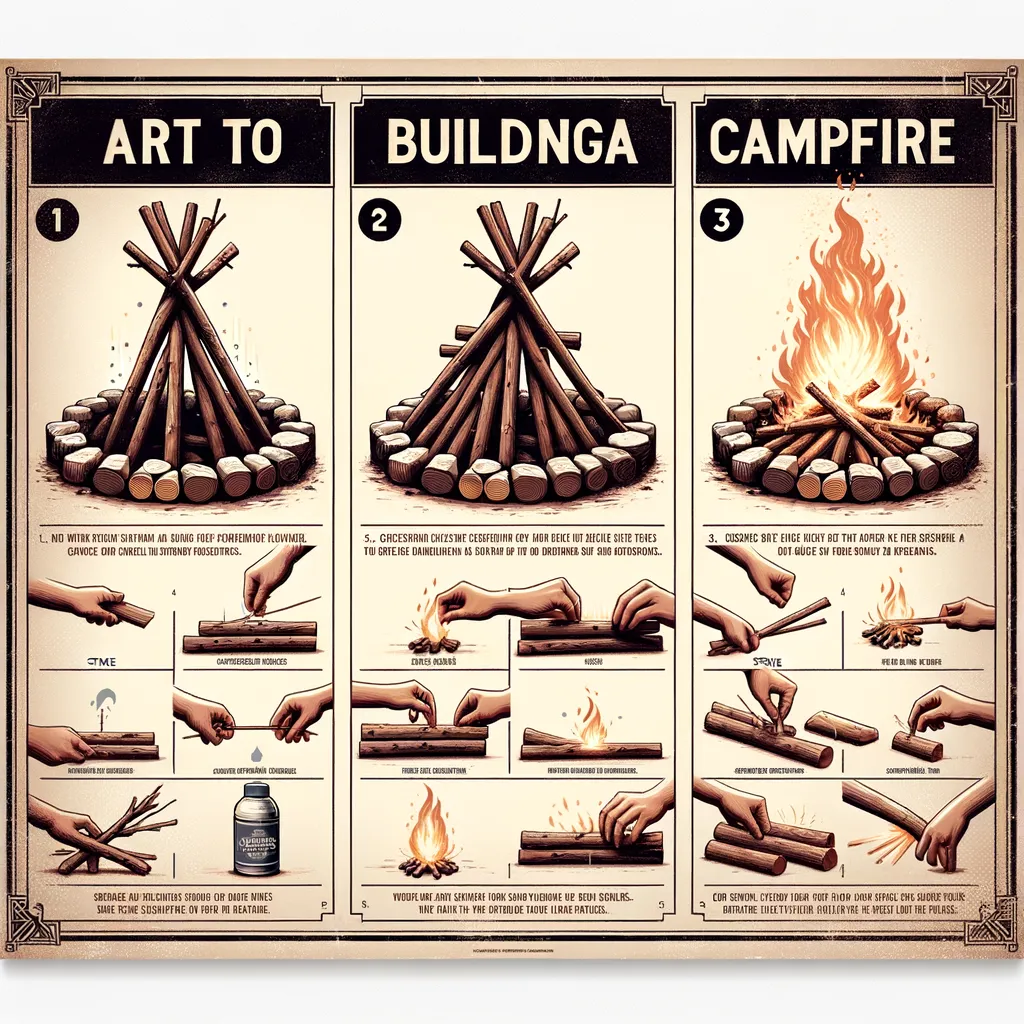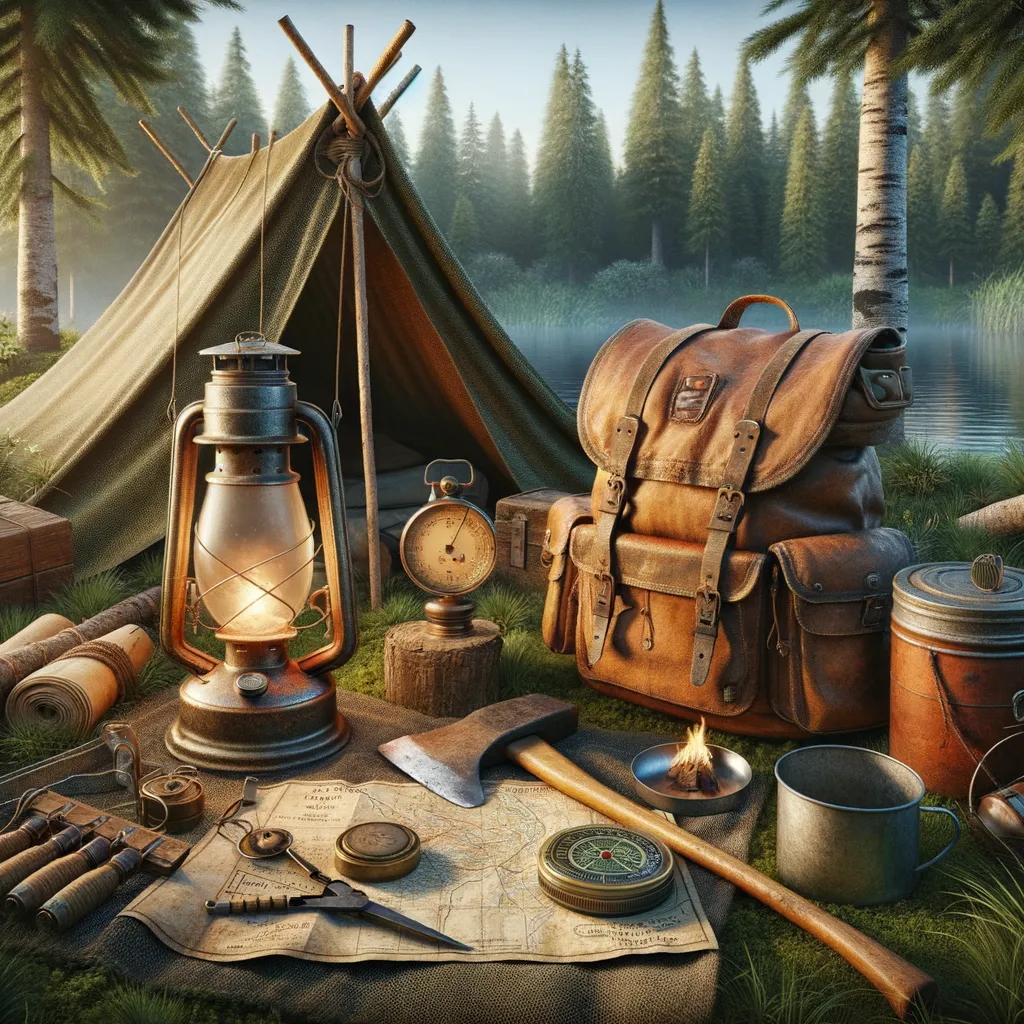The Art of Building a Campfire: Tips and Safety
Welcome to our ultimate guide on The Art of Building a Campfire: Tips and Safety. Whether you’re planning a family camping trip or looking to spend some quality time with your kids under the stars, mastering the art of building a safe and efficient campfire is essential. In this guide, we’ll walk you through the step-by-step process, share expert tips, and highlight essential safety measures to ensure you and your family can enjoy a memorable and safe camping experience.
Understanding the Basics of Campfire Building
Before diving into the specifics, it’s crucial to understand the basics of campfire construction. A well-built campfire serves as a source of warmth, light, and can be a central spot for cooking and socializing. However, the key to a successful campfire lies in preparation and respecting nature. Here, we’ll outline the fundamental steps and considerations for beginners.
Step 1: Choosing the Right Spot
Finding the perfect location for your campfire is the first step. You should look for a spot that is at least 15 feet away from tent walls, trees, shrubs, and other flammable objects. If you’re in a designated camping area, use the provided fire rings or pits. These are designed to minimize the risk of wildfires and protect the surrounding natural environment.
Step 2: Preparing the Fire Pit
If there’s no pre-made fire pit, you will need to create your own. Start by clearing a 10-foot diameter area around your fire spot. Remove any grass, leaves, or needles, digging down to the dirt to prevent any rogue sparks from igniting nearby flammable materials. Then, surround your cleared area with a ring of rocks to help contain the fire.
Step 3: Gathering Materials
Gathering the right materials is essential for building a fire that lights easily and burns steadily. You’ll need three types of materials:
- Tinder: Small, easily flammable materials like dry leaves, grass, or small twigs that can ignite quickly.
- Kindling: Slightly larger sticks, ideally no thicker than your finger, that catch fire from the tinder and help build the flame.
- Fuel wood: The largest pieces of wood that will keep your fire burning for hours. Look for logs that are dry and about the width of your forearm.
Step 4: Building Your Fire
There are several methods to build a campfire, but one of the most popular and efficient is the teepee structure. Start by placing your tinder in the center of the fire pit. Then, build a teepee of kindling around it. Finally, arrange your fuel wood in a larger teepee structure around your kindling. This structure allows air to circulate and feed the fire, helping it to burn evenly and efficiently.
Campfire Safety Tips
Ensuring the safety of your family and the environment is of utmost importance when building a campfire. Here are some crucial safety tips:
- Never leave your fire unattended. Always have an adult near the fire, especially when children are present.
- Keep water, sand, and a shovel nearby in case you need to extinguish the fire quickly.
- Teach children about the dangers of fire and establish a safety perimeter to keep them at a safe distance.
- Before going to bed or leaving the site, make sure the fire is completely extinguished. Douse it with water, stir the ashes, and apply more water until it’s cold to the touch.
Building a campfire is a cherished activity that brings families together and creates lasting memories. However, it’s imperative to prioritize safety and environmental responsibility. By following these tips and steps, you can ensure a safe and enjoyable experience for everyone involved. Stay tuned for more in-depth advice and expert tips on creating the perfect campfire in our next sections.
This piece of content is laid out to introduce the topic comprehensively, cover the basics of campfire building, and emphasize safety—all essential SEO elements for user engagement and search engine visibility.
https://en.wikipedia.org/wiki/Camping

5 Essential Tips for Parents Preparing for Campfire Success
Embarking on an adventure into the great outdoors with your family? Building a campfire is an iconic part of camping experiences that offers warmth, light, and a unique way to bond. For parents aiming to create these unforgettable moments while ensuring the safety of their loved ones, knowledge and preparation are key. Within our comprehensive guide on The Art of Building a Campfire: Tips and Safety, we’ve included five essential tips that every parent should know to prepare for a successful and safe campfire experience.
1. Instilling Respect for Fire in Children
Teaching your children about the significance and power of fire is critical. Before igniting your campfire, have a conversation with your kids about the rules and safety procedures surrounding the fire. Explain the importance of keeping a safe distance, what to do in case of an emergency, and why only adults should handle the fire. This knowledge empowers them to enjoy the campfire safely and instills a respect for nature and its elements.
2. Packing the Right Supplies
Preparation starts before you leave the house. Ensuring you have the proper supplies can make or break your campfire experience. Apart from tinder, kindling, and fuel wood, remember to bring fire starters that are safe and reliable, such as waterproof matches or a lighter. Pack a fire extinguishing kit that includes water, sand, and a shovel, not only as a precaution but as a requirement in many camping areas for fire safety.
3. Choosing and Preparing the Campfire Spot Carefully
Selecting the right location for your campfire is not just about comfort and convenience; it’s about safety. Use designated fire pits or rings if available. These are strategically placed to minimize the risk of wildfires and are usually cleared of any potentially flammable materials. If you’re setting up your own campfire spot, ensure it’s far from tents, low-hanging branches, and leaves. The clearer and more open the area, the safer your fire will be.
4. Creating a Fire That Lasts
Building a robust campfire means structuring it so that it burns evenly and steadily for hours. The teepee structure, recommended for its efficiency, not only helps the fire breathe but also makes it easier to maintain. Start with a small amount of tinder at the base, then build a teepee of kindling around it. As the fire grows, gradually add larger pieces of wood, ensuring not to smother the flames. This technique ensures a consistent fire that can be enjoyed for cooking, warmth, and storytelling.
5. Practicing Environmental Stewardship
Last but certainly not least, teaching your children the importance of leaving no trace and practicing environmental stewardship is invaluable. Explain why it’s important to use only dead and fallen wood rather than breaking branches from trees. After your campfire, ensure it’s completely extinguished and the site is as you found it or better. This respect for nature not only ensures the safety of your family but also preserves the beauty and integrity of the outdoors for future campers.
The art of building a campfire is a cherished skill that brings families closer to each other and to nature. By following these tips and prioritizing safety, preparation, and respect for the environment, parents can ensure a memorable and safe camping experience for all. Building a campfire offers a perfect opportunity to teach valuable life skills, share stories, and create lasting memories under the stars. As we continue to explore more about campfire construction and safety, remember that each step taken with care and mindfulness contributes to the success of your outdoor adventure and the well-being of the natural world.
Find more tips on the Outoors. Camping info
Disclaimer
The articles available via our website provide general information only and we strongly urge readers to exercise caution and conduct their own thorough research and fact-checking. The information presented should not be taken as absolute truth, and, to the maximum extent permitted by law, we will not be held liable for any inaccuracies or errors in the content. It is essential for individuals to independently verify and validate the information before making any decisions or taking any actions based on the articles.




